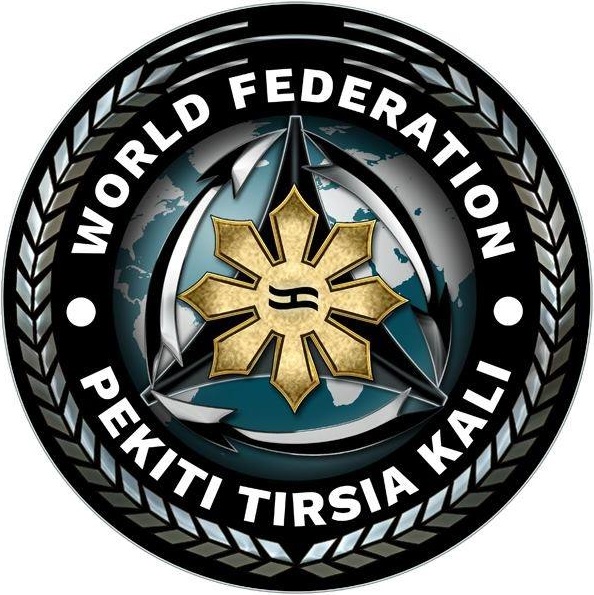

Pekiti Tirsia Kali (PTK)
is a melee weapon and empty hand combat system, a sub-discipline of Kali,
which is an umbrella term for all Filipino Martial Arts (FMA).
Kali was an ancient bladed art, which existed long before Spanish colonization. Its name is derived from the Filipino word "kalis", which means "sword".
Arnis and Escrima or Eskrima are Spanish terms, used to describe Kali, derived from old Spanish words "arnes" which means "armor" and "esgrima" which means fencing.
Today all these words are used interchangeably to decribe Filipino Martial Arts.
There are literally hundreds of different FMA styles. Often every tribe had their own style, which was kept secret from the outsiders. Thus many of the styles have unfortunately been lost.
The Art of Kali was so effective that during the Spanish colonization era, Filipino fighter could easily beat Spanish warrior with a stick against a real sword.
Thus only due to technological superiority, Spain was able to conquer the Philippine Archipelago.
The roots of Pekiti Tirsia Kali are in 18th century. It was founded by the Tortal family and was mainly used to protect their land and property from the other clans.
The art was formalized in 1897, but teaching to non-family members began only in 1972.
Today Pekiti Tirsia is one of the most well known FMA style, that is being taught to the military, police force, private security and civilians across the world.
There are three pillars of Pekiti Tirsia Kali and Filipino Martial Arts in general: circular movements, inertia and speed.
• From circular movements comes the inertia:
When you are in continuous motion and each strike ends with the loading position for the next attack.
• From inertia comes the speed:
When you don't have to decelerate and accelerate your body parts after each strike, so you can achieve higher speed.
• From speed comes the power:
When you have achieved maximum speed you every strike has power behind them.
In western martial arts every strike consists of two movements: the strike itself and the return of the hand or foot to the original position.
In FMA every strike is one movement, because of the circular trajectory, you don't need to return your hand back, but you can immediately initiate a new strike.
This is what makes FMA look incredibly fast compared to western martial arts, because for every strike that a boxer does a FMA practitioner can do two strikes.
Not to mention that because in order to accelerate and decelerate your limbs you need to use your body's explosion force,
it takes tremendously more energy than making a continuous circular movement, which means you won't get tired as fast.
This may not seem much when you are training with empty hands, but with a heavy weapon the difference is huge.
South East Asians are the smallest people in the world. In addition of being one of the shortest nation, Filipinos are quite skinny and have low muscle mass. The average height of a Filipino male is 163 cm, and the weight is 53 kg. Therefore in a combat against Europeans who were over 10 cm taller and 20 kg heavier, Filipinos had significant size disadvantage. For this reason in addition of utilising inertia, in FMA there's no grabbing or wrestling brute force against brute force. All join locks are accompanied with the strike, instead of slow and tedious twisting. Due to the specific characteristic FMA it is the only martial art where a smaller and physically weaker person can win against a bigger and stronger attacker. Thus it is particularly good for people who are below the average size or strenght and for women.
While in western martial arts sparring or friendly combat is a crucial part of training, in FMA the foundation is in drills. Drills are a playful combat, but unlike in sparring, where attacks are random, there is an agreed choreography. When you know what your training partner is going to do, you can build up the speed, which develops your motoric skills and coordination. On top of that training with sticks and even dull knives is a lot more dangerous than with empty hands, and in sparring you would have too many unnecessary injuries. But with drills you can build up your skills without compromising your safety. Not to mention that in most cases sparring does not benefit you, because it creates a lot of stress which negatively affects your training progress. Thus it's mostly done by people who just want to fight and hurt other people.
All techniques in FMA are interchangeable, no matter what the melee weapon is.
There's no point in learning new techniques for each new weapon group, when at the base level all weapons work the same way, because the attacks are based on the lines of motion of the human body.
This philosophy goes far, that even empty hand techniques (Suntukan) are derivations of techniques performed with a weapon.
Because of the interchangeability, the practice of Pekiti Tirsia Kali, as well as of all other FMA style, starts with the stick, which simulates a sword.
Only when the student is comfortable with the stick, the training is downgraded to knife and lastly to empty hands.
The reason for such progression is because since all movements are interchangeable, it's much easier and wiser to learn them with large tool first, so that the trajectory is correct.
Another reason is that when there's a limited time to train the person, it's much wiser to teach him how to use a weapon first,
because in real combat scenario having a weapon and knowing has to use it, would be a life changing advantage.
A person who has trained one day with a sword, can already beat 99% of unarmed opponents. However to get the same results with empty hands, it would require several years of training.
Beginner Student
Advanced Student
Assistant Instructor
Full Instructor
Master ranks are so-called leaderships ranks, and thus awarded not for the individual's Pekiti Tirsia Kali skills, but for teaching and promoting the art.
Skilled Instructor
Master Instructor
Grand Master. Highest rank a normal practioner can achieve.
The highest rank in Pekiti Tirsia Kali, reserved to the leader of the Tortal family as the keeper of the Art. There can be only one Grand Tuhon at a time.

March Madness Seminar
Instructor
Location
Date

Mastery Camp 2025
Instructor
Location
Date

Global Convention
Instructor
Location
Date

Filipino Martial Arts International Convention
Instructor
Location
Date